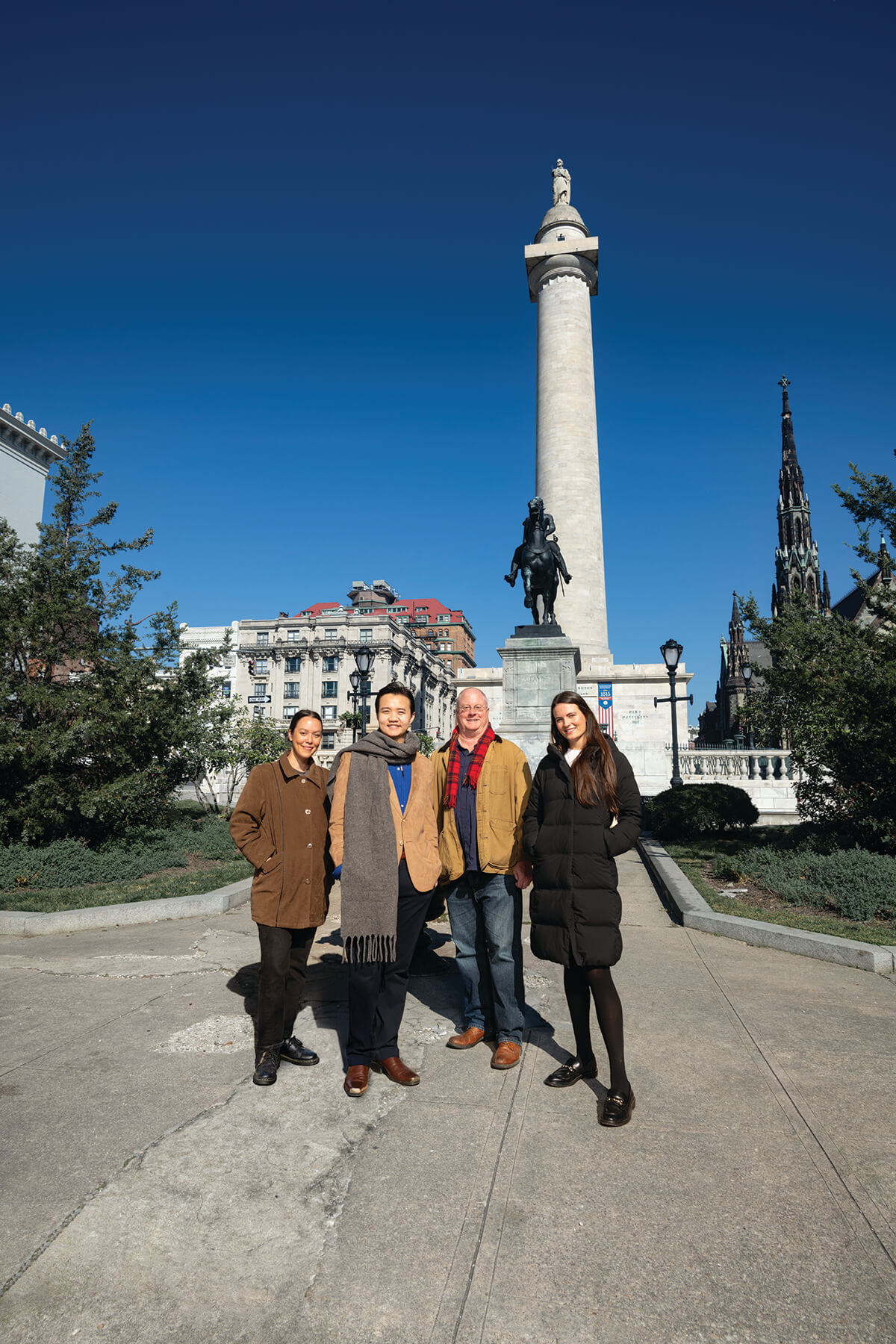News & Community
Monument Lighting Returns to Illuminate Mt. Vernon With Even More Sparkle This Year
With plenty of planning and additional lights, the 54-year-old tradition is back Dec. 5.

Lance Humphries was planning to go shopping. On his list: LED lights. Lots of them.
Humphries is executive director of the Mount Vernon Place Conservancy, the nonprofit that runs Baltimore’s annual Washington Monument Lighting, an event that, for more than a half-century, has illuminated the focal point of one of the city’s most historic neighborhoods.
Planning for it begins in August and, on this day in early October, Humphries was preparing to place an order for 10,000 lights that will attach to 28 strands to be hung on the 178-foot-tall monument to the United States’ first president, George Washington.
“The monument lighting is kind of the official launch of the holiday season in Baltimore—it’s like our Rockefeller Center Christmas tree,” he says.
They don’t buy new lights every year, he explains, but the current ones are on their last legs.
The idea for the spectacle came from—who else?—Mayor William Donald Schaefer. The colorful politician never missed an opportunity to promote his city and saw a similar display in Indianapolis’ Monument Circle. Baltimore’s first lighting took place in 1971 and, since then, it has grown exponentially. For years, it was run by the Downtown Partnership, but in 2022, the Conservancy took over. Formed as a nonprofit in 2008, their mission is to restore, maintain, and manage the monument, as well as the surrounding park squares of Mount Vernon Place.
But they don’t do it on their own. Dozens of individuals and organizations are involved in staging the event, from Downtown Partnership to Midtown Community Benefits District. More than 20 vendors sell food to the crowd, which averages 10,000 people. The city’s fire department reviews and approves permitting for the fireworks, which are launched from the plaza. Roughly 1,000 are shot off by Curtis Bay’s Image Engineering.
Emma Loftus has one of the best perches for the five-and-a-half-minute pyrotechnics show. The associate director of the conservancy, she’s typically watching from a sponsor party at the Engineers Club or Topside, a restaurant on the top floor of the nearby Hotel Revival that hosts an annual watch party. “It’s a spectacular show in a spectacular setting,” she says.
Humphries usually watches from the event’s “Main Stage,” which hosts musical performances throughout the night from the Baltimore School for the Arts, Peabody Institute, and the Morgan State Choir. But there are also good views available on the ground from almost anywhere in the neighborhood.
Surprisingly, Humphries says one of the worst vantage points would actually be inside the monument, which is open to the public Wednesdays through Sundays but closed for the lighting. Climb 227 stairs to it and you’ll find narrow windows, meaning most of the fireworks would be exploding out of view, above the statue of George Washington that sits atop the exterior of the monument.
“If you could sit on [his] head, that would be pretty fun,” jokes Humphries.
Construction on the monument began in 1815, prior to that other Washington Monument down I-95, and another one in Boonsboro, Maryland, which some people cite as the first monument to the first president. Humphries is not one of them.
“People were climbing to the top of this monument in 1820,” he says. “It was an active monument in advance of the other ones. The Boonsboro people will beg to differ on that. I’ve read both accounts, and I think that adds to the charm.”
And as anyone who’s seen the monument fully illuminated when the switch is flipped from its basement on the first Thursday in December knows, it certainly does add to the town’s nickname, Charm City.